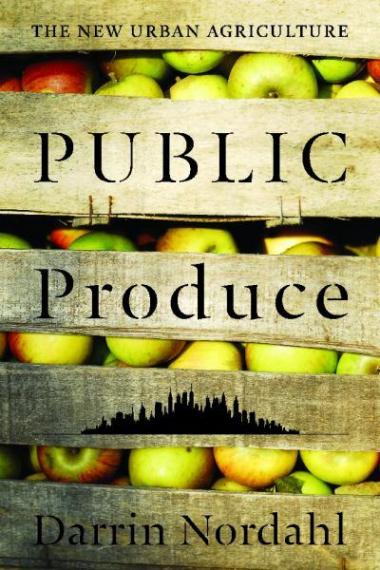
Garden Cities
PUBLIC PRODUCE:
The New Urban Agriculture.
By Darrin Nordahl.
Island Press. 177 pp. $30

PUBLIC PRODUCE:
The New Urban Agriculture.
By Darrin Nordahl.
Island Press. 177 pp. $30
America’s relationship with food is dysfunctional. Obesity, childhood malnourishment, fast-food addiction, E. coli and salmonella outbreaks—the list of problems is as familiar as it is dismaying. Though average Americans are fundamentally disconnected from the vast industrial networks that disgorge their daily meals, they were not always so removed from food production. Even after the United States converted from an agrarian to an industrial economy, there were periods when large numbers of the country’s citizens helped to grow the food they ate. During World War II, the public heeded the U.S. government’s call to raise “victory gardens” to ease the strain of supplying canned goods to overseas troops. In 1944, an estimated 20 million victory gardens yielded eight million tons of food.
In Public Produce, city designer Darrin Nordahl describes how towns and cities are working diligently to tap that spirit again and create civic cornucopias. He has more in mind than the occasional community garden. He wants the largest landlord in most cities—the municipal government—to expand the uses conceived of for public places beyond recreation and aesthetic pleasure to include farming.
The reasons for such an effort are many, Nordahl contends. The availability of cheap energy to create crop fertilizer and transport food (produce travels an average of 1,500 miles to reach your local grocery store) is nearing an end. With climate change come weather anomalies that make our centralized food supply less dependable. Crops grown and eaten inside city limits reduce the risk of national food-borne epidemics and require much less energy to make it to the table. Most intriguingly, Nordahl writes, visible food production in downtown areas, street medians, and school yards increases food literacy: “Just being able to see the bounty and diversity of edibles in our environments can be educational and may prompt diversity in our diet, while making us more food fluent.”
Some city governments are pioneering urban agriculture models. Chicago harvests honey from the roof of city hall and sells it to fund arts and culture programming. Portland, Oregon, is working to designate fruit trees for planting in city streetscapes. And Nordahl’s own city, Davenport, Iowa, is encouraging “square-foot gardening,” whereby apartment residents cultivate vegetables in raised beds on their balconies. The most effective way to promote urban agriculture, Nordahl declares, is simply to ensure that growing crops on public land is not illegal, as it is now in many communities. There’s a lot of space to activate. In Chicago, for instance, 70,000 empty lots lie fallow. A third of the city of Detroit—40 square miles—is vacant.
At times, Nordahl’s vision is overly idealistic or utopian. He imagines a world where people will not sue if they slip on rotten grapes littering city property and suggests that city gardening can be a cure-all for nearly every social ill, and even reduce crime. And he concedes that urban farming will meet only a small portion of the nation’s food needs, which means that on its own it won’t fundamentally alter large-scale agribusiness. But Public Produce is an admirable manifesto that addresses the myriad concerns about the way we grow and consume our food.